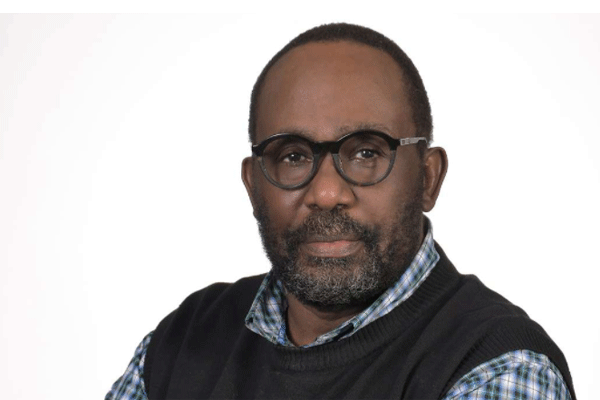Prime
The curious case of Kabaka, Kyabazinga and other kings

Author: Charles Onyango Obbo. PHOTO/FILE
What you need to know:
- Busoga ultimately taught us a lesson in non-violence during a furious power struggle and outlined how a democratic contest might look in a future Uganda.
It’s now just over two weeks since the 10th edition of Kabaka’s Birthday Run. Held to celebrate Buganda Kabaka (King) Ronald Muwenda Mutebi II’s birthday; this year’s his 68th, it also creates awareness about various issues. The 2023 instalment was dedicated to raising awareness for the fight against HIV/Aids.
There were several other things beyond Buganda in the soundtrack to the birthday run. This year is the 30th anniversary of the restoration of kingdoms. For Kabaka Mutebi, July 31, will be the 30th anniversary of his coronation.
The kingdoms, in their various hues and colours, have lasted seven times longer than they did after independence in 1962, following their abolition by the Milton Obote government in the 1966 “Buganda Crisis” (also known as the 1966 Mengo Crisis, or simply the Kabaka Crisis).
In 1993, one could foresee that the kingdoms would last this long, but not the narrative they have created. Though the kingdoms were restored as cultural, not political, entities, many analysts argued that they would still accumulate political power and face off politically with the central government as Buganda did in 1966.
This year’s Kabaka Birthday Run has been judged to be the biggest ever, with more than 100,000 tickets sold (for Shs20,000). It is, without doubt, the largest paid mass event in Uganda. My research indicates it is also, by a country mile, the largest paid event held in honour of a monarch or chieftain in Africa.
Kabaka Mutebi is a taciturn potentate who rarely speaks in public, but he is also a clever former writer/journalist who hasn’t missed the meaning of all this.
The stock of the Buganda kingdom has shifted with the growth of its political alienation from President Yoweri Museveni’s government and the ruling National Resistance Movement (NRM). In the 2021 election, Bobi Wine (Robert Kyagulanyi) and his National Unity Party (NUP) rode that wave and nearly wiped out Museveni and NRM electorally from Buganda. It was a dramatic reversal of fortune because by the time the kingdoms were restored in 1993 and for a few short years after that, many in Buganda kissed the ground on which Kaguta’s son walked.
Yet, it has not been a loss for Museveni. He is doing well from it. The growth in Buganda’s devotion to the kingdom as a point of reference and meaning as the bigger Uganda state tramples them has had a deradicalising effect. Today Buganda will channel its political disaffection into the embrace of the king and monarchy. In 1981, when Museveni took his rebellion to the Luwero bushes, Buganda’s anger was channelled as militancy against the Obote II regime and an acceptance to pay a high price to defeat him.
The irony, then, is that at the point of what probably is Buganda’s highest grievance against Museveni’s rule, its monarchy is also one of the leading sources of militant political sedation and stability for his regime. In recent years, the Buganda monarchy has seemed like the NRM’s hostage, often menaced with the threat of punishment and liquidation for not being too friendly. Today, the NRM government is probably Buganda’s hostage – even if it might not seem so.
It gets more intriguing when one turns to Busoga. In February 1996, three years after Mutebi, Henry Wako Muloki was reinstated as Kyabazinga Isebantu (king) of Busoga. He died in September 2008.
Busoga’s Kyabazingaship is contested, as royal chiefs elect him. The Kyabazinga is William Kadhumbula Gabula Nadiope IV. Still, years after his grandfather’s death, the monarchy was rocked by several messy succession battles, with rival princes “elected” at various ceremonies.
Though it wasn’t pretty, these duels over the Kyabazinga’s throne still taught us an important lesson. Uganda is a country where every presidential election is a death dance, with opponents like Kizza Besigye, Bobi Wine, and Patrick Amuriat jailed, beaten, pepper sprayed, and humiliated. Their supporters are killed and carted away by shadowy security operatives in “drones” (unmarked vans) and tortured in secret dungeons. Some are killed.
If the contest for the Kyabazingaship had been for the Ugandan presidency, the death toll would have been high and the trail of violence long. Yet, for the many years of the feud over the Kyabazingaship, it was heated and mean, yes, but not deadly. Busoga ultimately taught us a lesson in non-violence during a furious power struggle and outlined how a democratic contest might look in a future Uganda. Quietly, it was a powerful counter-narrative to the dominant militaristic and violent mode that has marked the struggle for presidential and, lately, parliamentary power in Ugandan history.
This was a different service than the cultural kingdoms were meant to provide. It demonstrates the old contradiction between what things are designed to do and be and what the people turn them into in their use of them. We give thanks for the design failure.
Mr Onyango-Obbo is a journalist, writer and curator of the “Wall of Great Africans”. Twitter@cobbo3




